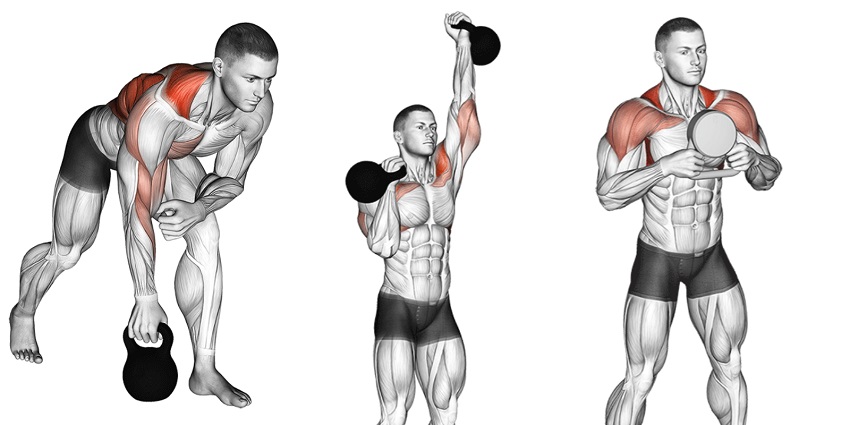I wanted a solid upper body kettlebell workout, so I figured I’d start simple. I saw someone on Reddit asking if the kettlebell halo could be the main move for that.
Honestly? I thought, yeah, maybe it could work. It hits your shoulders, feels smooth, and gets that upper back moving. Plus, it looks cool. I ran with it for a while.
But after a few sessions? I noticed something later. My arms weren’t really growing markedly. My chest felt like it was on vacation overall. And my back? Significantly barely even sore. I was sweating, sure — but it didn’t feel like I was building anything.
So I started digging. If I wanted real results, I needed more than just halos. That’s when I started piecing together a kettlebell upper body plan that could hit everything without needing a whole gym.
What “Upper Body” Really Means
At first, I thought upper body just meant arms and maybe shoulders. But once I really looked into it, I realized there’s a lot more going on up top.
If you actually want to build a strong, balanced upper body, here’s what you’ve gotta hit:
- Shoulders — front, side, and rear. Not just pressing. You need to move in all directions.
- Chest — the pecs need real push movements to grow.
- Back — lats, traps, rhomboids. Pulling power, posture, and that wide look.
- Arms — biceps and triceps. Gotta hit both.
- Core — not the main goal here, but good kettlebell stuff always makes your core work too.
I wasn’t training half of that when I was only doing halos. So yeah, it looked like I was working out… but I wasn’t really building muscle or strength where it counted with kettlebell.
My Full Upper Body Kettlebell Workout – Just 5 Real Movements
The Kettlebell Halo Is Good — Just Not “Main-Lift” Good
Undoubtedly, i’m not here to hate on the kettlebell halo. I actually still use it a lot. It’s just not enough by itself if you want a real upper body kettlebell workout.
Why I like it:
It’s an awesome warm-up. Loosens up the shoulders and upper back. Gets your joints ready to move — especially before any kind of pressing. Also sneaks in a little core work too.
How to do it:

- Grab the kettlebell by the horns, flip it upside down, and slowly circle it around your head.
- Keep your ribs down and your core tight.
- Do both directions.
- Stay smooth.
- Don’t rush it.
Targets: Mainly shoulders, traps, and upper back. Core gets a little love too.
It doesn’t build serious strength or size. It won’t hit your chest, arms, or mid-back the way a press or a row will. So while it’s great to include, it’s not enough on its own.
5 Movements Full Upper Body Kettlebell Workout
Once I realized the halo wasn’t gonna cut it alone, I kept things simple. I wanted the smallest number of movements that still hit everything up top. Here’s what I landed on — no fluff, all function.
- Kettlebell Floor Press
- Kettlebell Row
- Kettlebell Overhead Press
- Kettlebell Bicep Curl
- Kettlebell Overhead Triceps Extension
Kettlebell Floor Press
Why I like it: No bench? No problem. This one hits your chest and triceps hard, and it’s easy on the shoulders.
How to do it:

- Lie flat on your back with a kettlebell in each hand.
- Press them straight up from the floor.
- Keep your elbows tucked at about 45°.
Targets: Chest, triceps, shoulders
Kettlebell Row
Why I like it: Builds your lats, upper back, and even biceps. Helps fix your posture too.
How to do it:
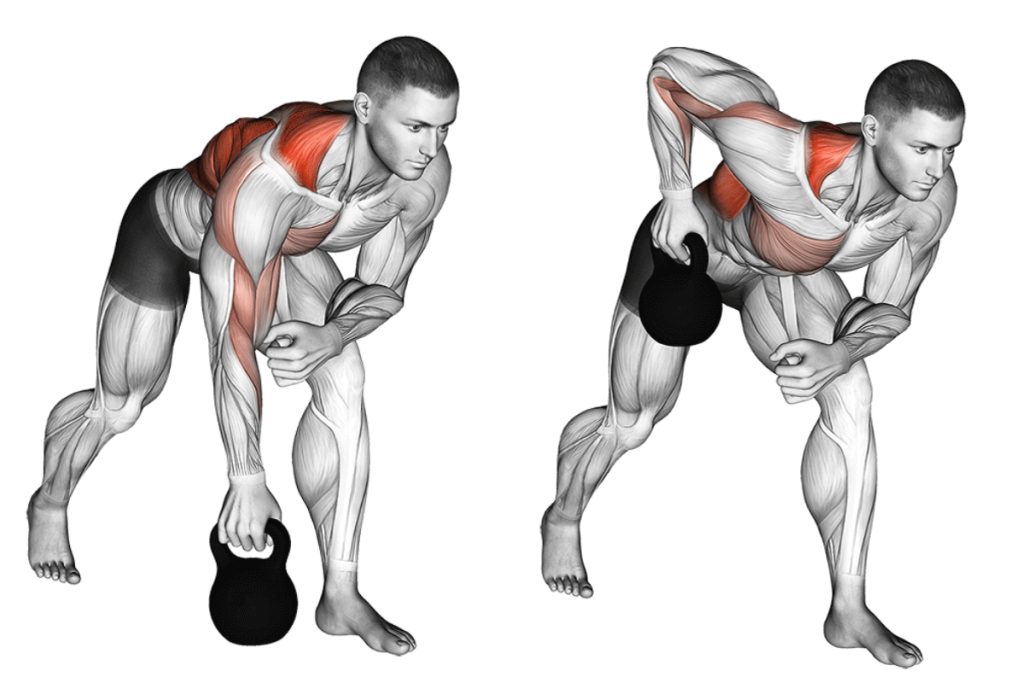
- Hinge over like a deadlift.
- Keep your back flat. Row one kettlebell up to your ribs, then lower with control.
- Switch sides.
Targets: Lats, rhomboids, traps, biceps
Kettlebell Overhead Press
Why I like it: Overhead work builds real shoulder strength. Plus, your core has to work overtime to keep you stable.
How to do it:
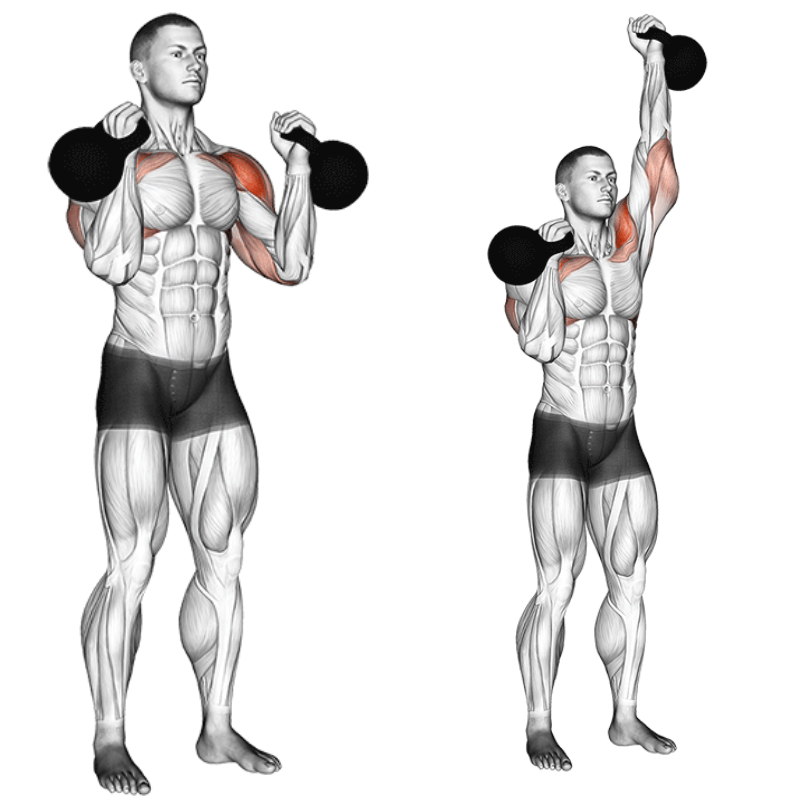
- Clean the bell to your shoulder.
- Press it straight overhead without leaning back.
- Use one or both arms.
Targets: Shoulders, triceps, core
Kettlebell Bicep Curl
Why I like it: Classic. Simple. It does exactly what it’s supposed to.
How to do it:
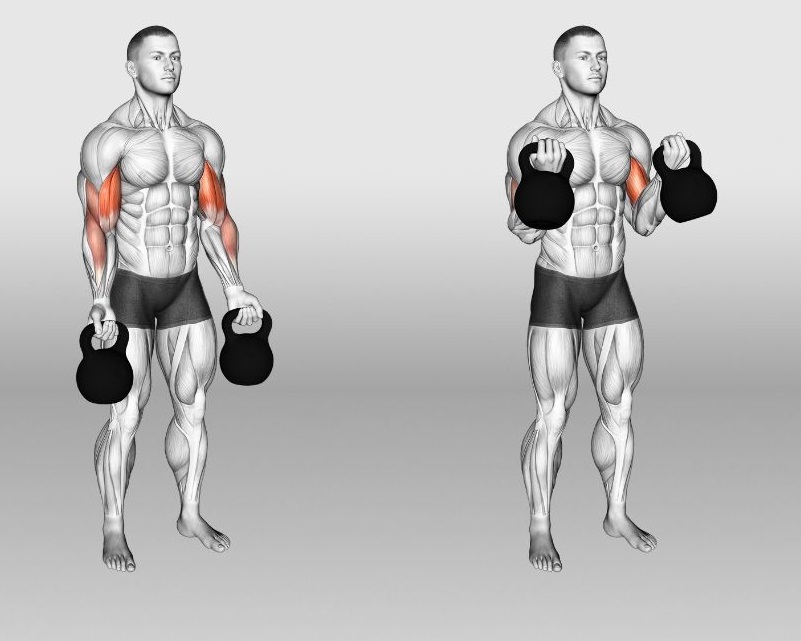
- Keep your elbows close to your sides.
- Curl the bell up — either single-arm or double.
- No swinging.
Targets: Biceps
Kettlebell Overhead Triceps Extension
Why I like it: Great stretch, great pump. One of the few kettlebell moves that really isolates the triceps.
How to do it:
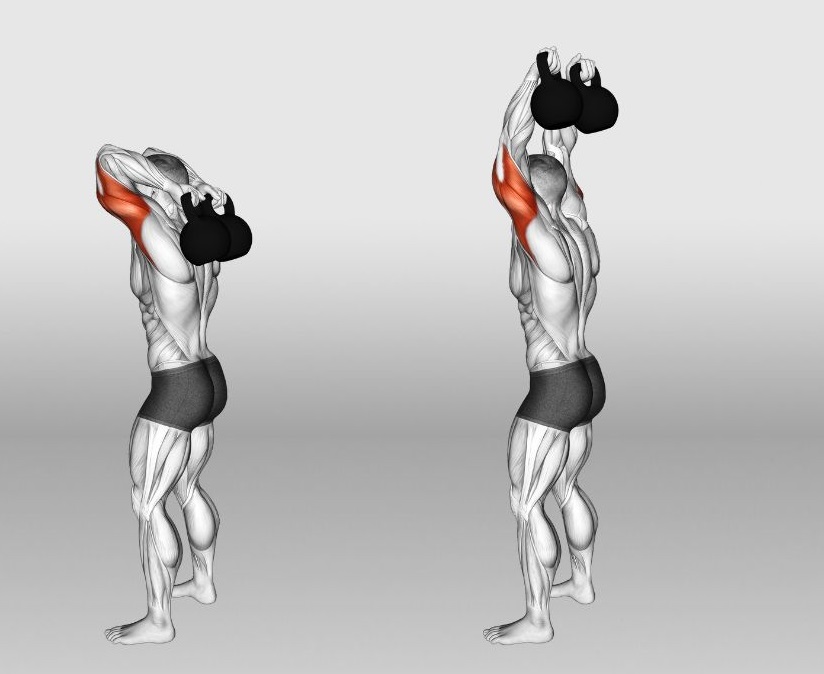
- Grab the kettlebell by the horns, hold it upside down (bell pointing up).
- Lift it overhead — your arms should be straight, elbows close to your ears.
- Bend only at the elbows, lowering the bell behind your head. Keep your upper arms still.
- Extend your arms back up to the top, squeezing your triceps at the top
Targets: Triceps (long head especially), shoulders (stabilizers), and a bit of core.
Beginner-Friendly Upper Body Kettlebell Workout Plan
- Days Per Week:2–3 (e.g. Monday & Thursday)
- Time Per Workout:~30–40 minutes
Do the exercises in order as a circuit or in pairs (supersets). Rest 30–60 sec between sets.
| Exercise | Sets | Reps |
|---|---|---|
| Kettlebell Halo | 3 | 8–10 reps each direction |
| Kettlebell Floor Press | 3 | 8–12 reps |
| Kettlebell Row | 3 | 8–12 reps each arm |
| Kettlebell Overhead Press | 3 | 8–12 reps each arm |
| Kettlebell Bicep Curl | 3 | 10–12 reps |
| Kettlebell Overhead Triceps Extension | 3 | 10–12 reps |
Looking back, the kettlebell halo was a great starting point unquestionably. It not only got me moving, loosened up my shoulders, but also made my upper back feel amazing. But as I kept training, I realized I needed more — more strength, more muscle, and more coverage. In Brief, now I’ve got a routine that doesn’t waste time and hits every part of my upper body. Just chiefly six moves. No fluff. All kettlebell.
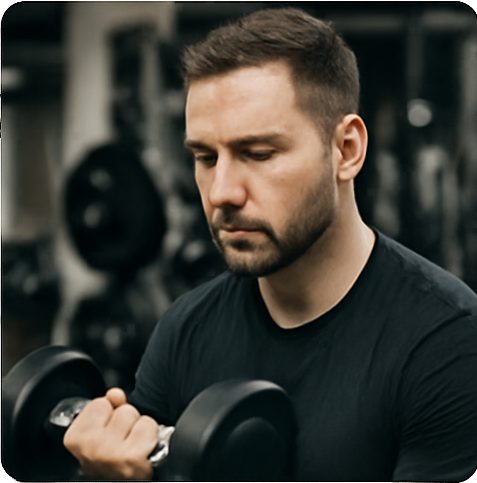
Hi, I’m the editor here at Leadman Fitness. We’re a manufacturer focused on producing top-quality barbells, plates, kettlebells, dumbbells, and strength training gear. I’ve been into sports and fitness for years, and I know my way around all kinds of gym equipment—both from using it and helping create it.
I spend a lot of time understanding the real problems people run into in the gym—whether it’s beginners trying to pick the right gear or experienced lifters looking for something more durable. I stay in close touch with our production team and talk directly with other equipment makers, so we’re always improving based on what real lifters and coaches are looking for.
What I share comes from hands-on experience—stuff that actually helps people train better, not just in theory, but in real gyms.
